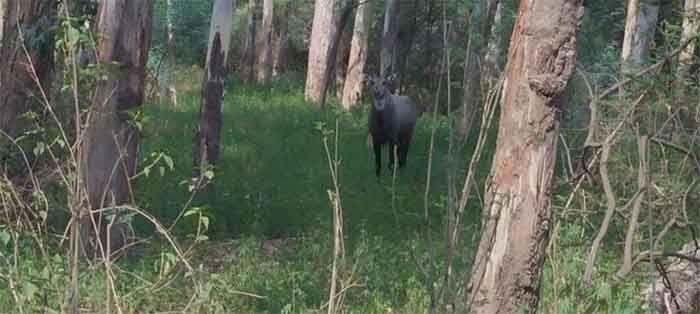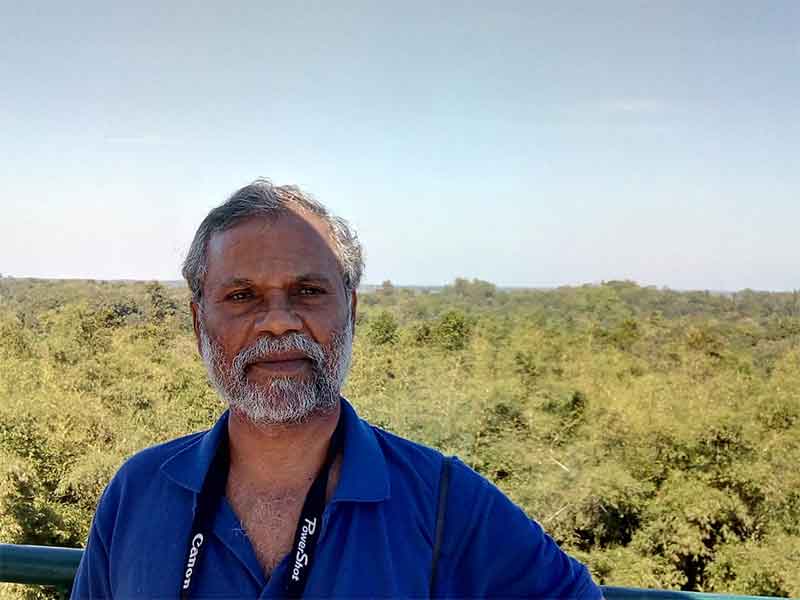
Punjab has one of the lowest forest coverage in the country as only about 4 per cent of the land here is reported to be under forest. Hence, apart from making longer-term efforts to increase its forest cover, it is extremely important to save its few remaining precious forests and it is in this context that the impressive mobilization that has taken place recently to protect the Mattewara forest in Ludhiana district should be widely appreciated. In addition important issues of saving river ecology and city ecology as well as protecting rights of villagers are involved in this escalating debate.
Mattewara is an important forest spread over about 2300 acres near the bank of the Satluj river in Ludhiana district. The forest has a rich and diverse wildlife include sambars, antelopes, nilgais, monkeys and many varieties of birds, including peacocks, apart from serving as a corridor for leopards. This forest serves as lungs for the highly polluted city of Ludhiana, and also helps to protect dense habitations from floods. The green cover is important for water conservation in the flood zone, which is of crucial importance in a region where the water table going down steadily is a very serious concern. A national level policy was announced recently to increase green cover around rivers, and here is a much cherished forest that already exists and hence should definitely be protected from any harm. Besides, this forest has strong cultural linkages including those associated with the great Sikh Gurus—Guru Govind Singh is said to have composed the famous poem of Mittar Pyare Nu in this forest (which was much more extensive and widespread at that time)
This forest is now threatened by the Punjab government’s decision to set up a textile park or industrial centre just near this forest. The government has stated that it will not cut any trees of this forest to set up this industrial centre but activists opposing the creation of the big industrial centre spread over about 965 acres so close to the forest have stated that this will inevitably led to the forest being harmed seriously. The pollution from the industries will of course be harmful for the forest, but in addition there will be so many other pressures that decisions detrimental to the health of the forest and its wild life are likely to be taken. For example already media reports have appeared of hundreds of trees likely to be axed for constructing a road as an initial step.
In addition the textile industries will also lead to higher pollution of Satluj river, a river which has already been depleted by water diversion in upper areas. Very serious cases of water pollution leading to a large number of fish deaths have been reported earlier from Beas river as well as other rivers and streams, while people have suffered from serious diseases due to excessive exposure to water pollution.
Another important aspect of this project relates to use of coercive methods to obtain land from villages. Nearly 40 per cent of the land for this project has come from Sekhowal village which has a significant dalit population and community land was also an important source of livelihood here. This use of coercion to get land for such a dubious project should be investigated properly and proper remedial action should be taken.
All available evidence indicates that the textile industry centre proposed to be set up here is ill-advised and will harm the forest, its wild life, the Satluj river and its flood plains, their water recharge ability. In addition the environment of Punjab’s largest city and its vicinity will be adversely affected.
Prof. Jagmohan Singh, Chairperson of Shahid Bhagat Singh Research Committee and a long term resident of Ludhiana says, “ This used to be a much bigger forest area spread far and wide and it is now very important to protect what remains of this. Unfortunately the government has been very callous towards the urgency of protecting trees and as a result so many roadside and canal side trees have faced the axe. It is high time that the government becomes much more conscious towards its responsibility of saving trees and forests. The forest of Mattewara must be protected.”
It is sad that such an ecologically sensitive area of a forest and a flood plain has been chosen by the government to set up the proposed industrial centre. This is clearly a highly mistaken decision and at this early stage it should not be difficult for the government to take back this decision and to find some alternative site, or better still, ensure better utilization of existing industrial spaces.
Bharat Dogra is Honorary Convener, Campaign to Save Earth Now. His recent books include A Day in 2071, Planet in Peril and Protecting Earth for Children.
















































